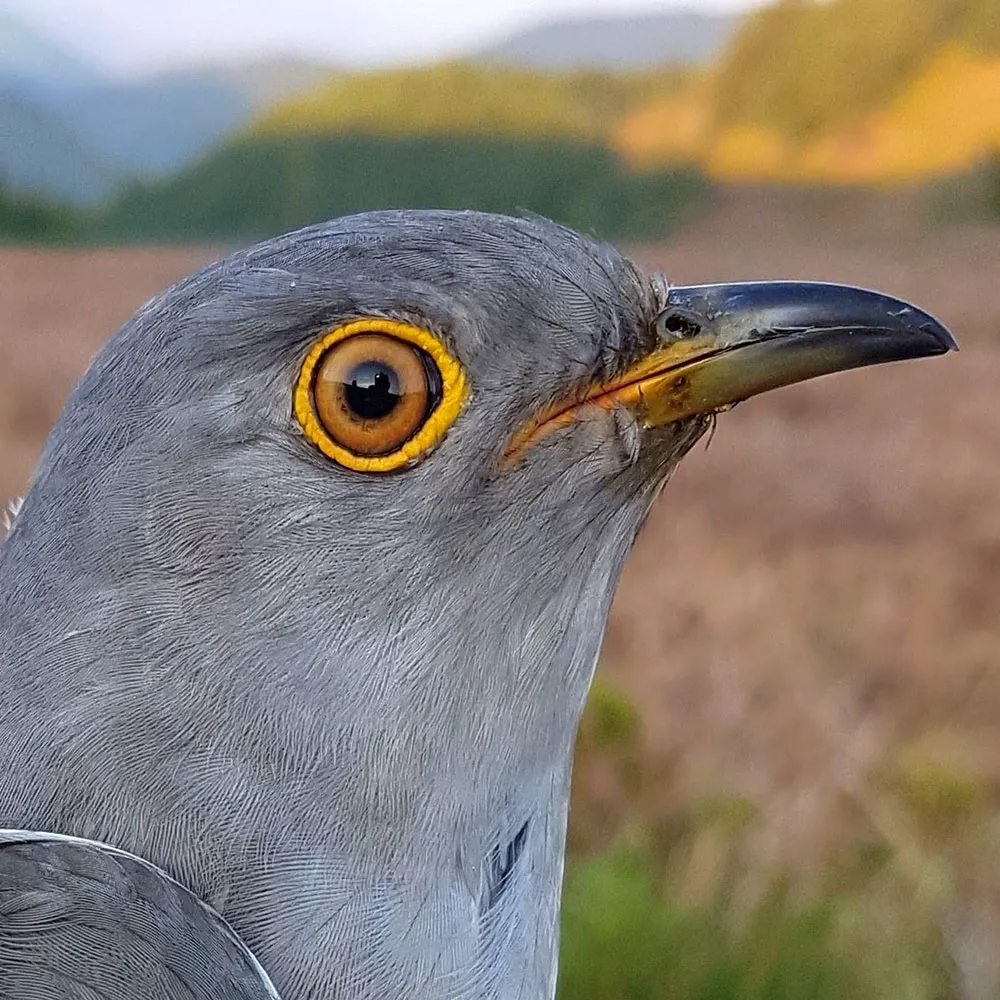JAC is named in loving memory of Professor Jenny Clack, a world-class palaeontologist, widely acknowledged as the leading authority on the evolution of land vertebrates from fish. The name JAC was chosen by Jenny’s husband Rob who said: “It seemed appropriate I should contribute to this important scientific study of Cuckoos in memory of a top-class scientist, whom I adored.”

Tagged : Tue, June 01, 2021 - 05:00
Age when found : Adult
Tagging Location : World's End, Llangollen, Denbighshire
Wing Length (mm) : 224
Sex : Male
JAC's journey from 1st June 2021 to 26th February 2024
Updates on JAC 's movements
The end of the road for Cuckoo JAC
We are very sad to report that we have heard the last from Cuckoo JAC.
JAC, named in loving memory of Professor Jenny Clack, was tagged at World’s End near Llangollen on 1 June 2021. Since then we have had the privilege of tracking him over two full migration cycles from Wales to Africa and back.
His route south across the Sahara took him via Algeria and Mali to the Sahelian areas of Burkina Faso or Niger. He then spent some time in northern Nigeria before heading on to the Congo. On his return migration north, he visited West Africa where he stopped in Ivory Coast in 2022 and Guinea in 2023, arriving back in Llangollen around the end of April each year.
The diagnostic data received from his tag shows the recorded temperature dropping and this, along with the fact that he appears to have been stationary for quite a while, suggests that he has perished (rather than there being a tag failure).
He has made a very valuable contribution to our growing knowledge of Cuckoo ecology and we will miss reporting on his movements.
JAC is back!
JAC reaches northern France
JAC pushes north through Spain
JAC crosses the Sahara
JAC still in Guinea
Since arriving in Guinea on 28 Feb JAC has flown a short distance north and is now halfway between Diassadougou and Guieredougou in eastern Guinea. He has spent approximately 20 days in this area preparing for the next leg of his northward migration. Last year he began crossing the Sahara on 7th April, so be prepared for JAC to migrate north within the next 3 weeks.
JAC joins Ellis in Guinea
JAC is on his way!
JAC moves to DRC
JAC nudges south in the Republic of Congo
JAC relocates south east in Congo
JAC arrives in the Congo
JAC moves east in Nigeria
JAC flies from Benin to Nigeria
JAC visits Benin
JAC moves into Niger
JAC completes his desert crossing
JAC makes it to Mali
JAC reaches sourthern Algeria
JAC reaches Africa
JAC reaches France
JAC visits Havant
JAC is back!
JAC moves north in Spain
JAC arrives in Spain
JAC completes his desert crossing
JAC takes on the Sahara
JAC reaches Ivory Coast
Update on JAC's location
JAC pops up in Ivory Coast
JAC crosses into Congo
JAC crosses the Congo River
JAC flies to the Congo
JAC crosses into Cameroon
JAC pushes further into Nigeria
JAC moves to Nigeria via Niger and Benin
JAC heads east
JAC restless in Burkina Faso
JAC has conquered the Sahara
JAC is crossing the Sahara
JAC conquers the Pyrenees
JAC moves south
JAC makes it to France
Introducing JAC
Top BTO tagger Lee Barber arrived to find BTO Cymru colleague Kelvin Jones already on site, with the nets up and a recently caught Meadow Pipit and female Sparrowhawk ready to ring. Once these had been processed they switched their Cuckoo tape on and this generated instant interest from a nearby Cuckoo. After a few passes, JAC was in the net. JAC is still near his tagging location north of Llangollen.
Meet the 2021 Cuckoos
After being unable to tag any Cuckoos in 2020 due to COVID-19 restrictions, we are delighted to be able to introduce eleven new Cuckoos this year!
The tagging teams faced some very early starts as usual to tag the Cuckoos, but they were rewarded with birds who were interested enough in the female lure to be caught, weighed and tagged (with the exception of a location near Loch Katrine where there were a number of female Cuckoos around, making our lure less convincing!).
Some of these newly-tagged birds have already begun their migration south, with one in France, one in the Netherlands and one of the Scottish birds is already down in Essex.
Keep an eye on the individual birds' blogs for updates on their progress.